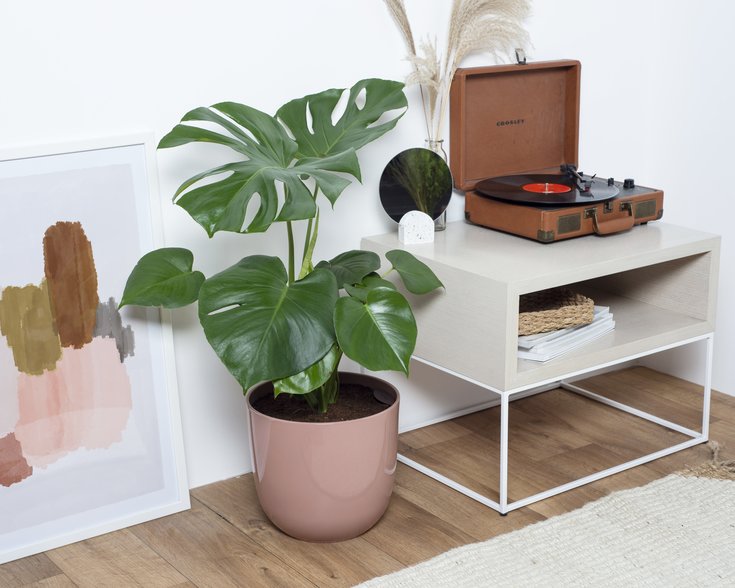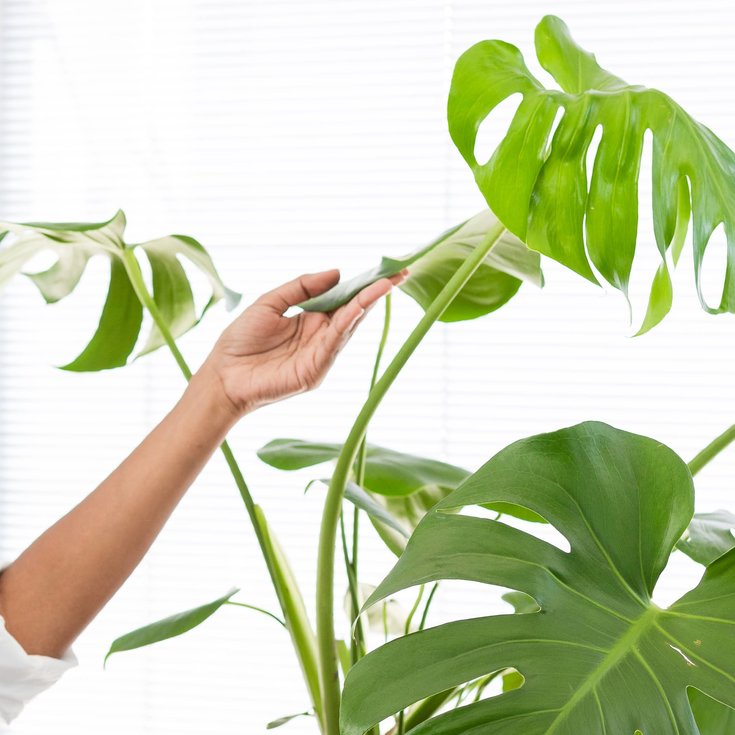Why Do Monstera Leaves Have Holes?
The Monstera, commonly known as the 'Swiss Cheese Plant,' is easily recognizable due to the distinct naturally occurring holes on the leaves, which are referred to as leaf fenestration. Although there are several theories regarding the reason behind this plant's evolution to produce such leaves, the cause of this adaptation remains a subject of debate. Keep reading to discover why Monstera plants possess holes in their leaves, as well as techniques for promoting the development of these distinctive features in your own Monstera plant.
Reasons Why Monstera Plants Have Holes in Their Leaves
Among the theories for leaf fenestration, the most commonly known are all in reference to the plant adapting to its environment. Monstera grows from the forest floor, vining upward in typically shaded areas. Their surroundings could dictate the adaptation of holes in Monstera leaves for protection and survival.
To Capture Sunlight
The Monstera's natural habitat is the tropical forests of Central America. These plants are used to being shaded by other larger plants and trees, limiting their sunlight exposure. To adapt to the limited sunlight, the Monstera allow their leaves to grow wide and large to reach sun rays. Additionally, they allow holes in the places where sunlight does not hit to conserve nutrients.
To Tolerate Wind
Weather makes a huge impact on the vitality of Monstera. When growing outdoors, there is always the possibility of harsh weather conditions like high winds, which can uproot plants. For this reason, it is theorized among botanists that to protect itself from being uprooted, it evolved the holes in the leaves. The Monstera leaf holes allow coarse winds to pass through these openings without harming or uprooting the plant.
To Absorb More Water
Another possibility why Monstera leaves have holes is to absorb water. Its broad leaves could deter rainfall from reaching the roots. The holes in the leaves allow rainfall to pass through and down the stem to the roots. Additionally, sitting water on the Monstera leaves could cause fungal infections and rot. The holes prevent these possibilities by ensuring the water drains properly.

What Facilitates Holes In Monstera Leaves?
Leaf fenestration is a naturally occurring process, but it is possible to facilitate this process in your Monstera. You can do a few things as the plant owner to ensure your plant grows to obtain this defining quality.
Age
Fenestration takes place in Monstera plants of a certain age and size, and it will take patience and care to allow your plant to get to this point. Once a Monstera reaches a span of three feet, growing new leaves with fenestration begins. It will take approximately 1-3 years for an adult Monstera to develop its first fenestration. Other growing conditions will affect whether your plant will develop holes in the Monstera leaves in this timeline.
Sunlight
Another factor in getting your Monstera to begin the process of leaf fenestration is mimicking the conditions the plant would have in its natural environment. The primary theory of the plant developing leaf fenestration is obtaining sunlight due to it being shaded by other plants and trees. Monitoring the amount of sunlight your plant gets in the home will help trigger fenestration as it ages and grows. Bright, indirect sunlight will allow enough light for the plant to grow while not risking scorching the leaves or possibly hindering the developing Monstera holes.
Plant Care
Since growth is a major factor in triggering leaf fenestration and getting those classic Monstera leaf holes, it's vital to care for your plant properly. Proper care includes watering, nutrients, well-draining soil, and sunlight. The leaves of the Monstera need to grow beyond a normal plant leaf, typically over 5-6 inches, to warrant fenestration. Factors like over-watering or over-fertilizing can hinder plant growth, so only fertilize twice a year and use an easyplant pot to care for your watering needs.

Get Your Own Monstera Plant With Easyplant Today!
Getting holes in your Monstera plant leaves is as easy as giving your plant proper care and allowing it to mature and grow to the specified size to trigger fenestration. Giving your plant an adequate amount of light to mimic its natural habitat and using the easyplant pot to avoid hiccups like overwatering will ensure you see beautiful fenestrations in no time.